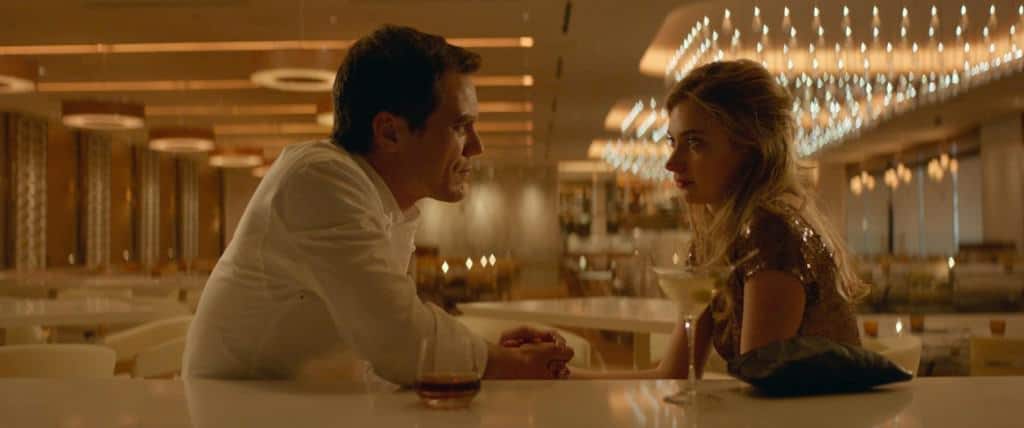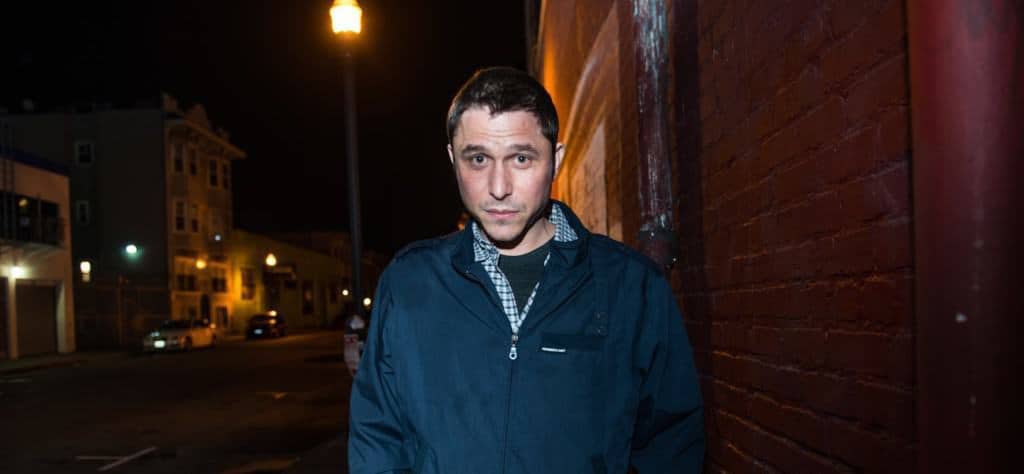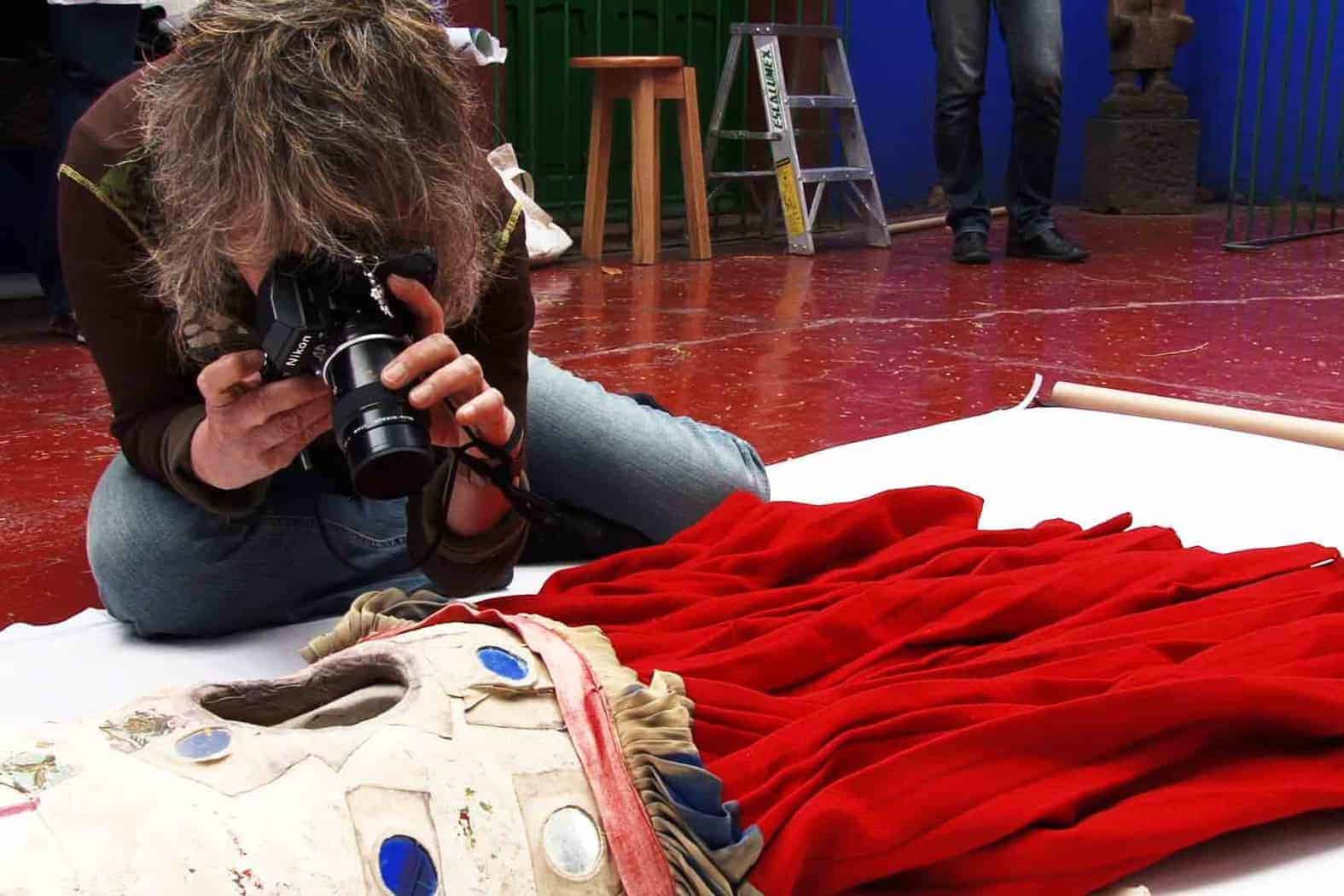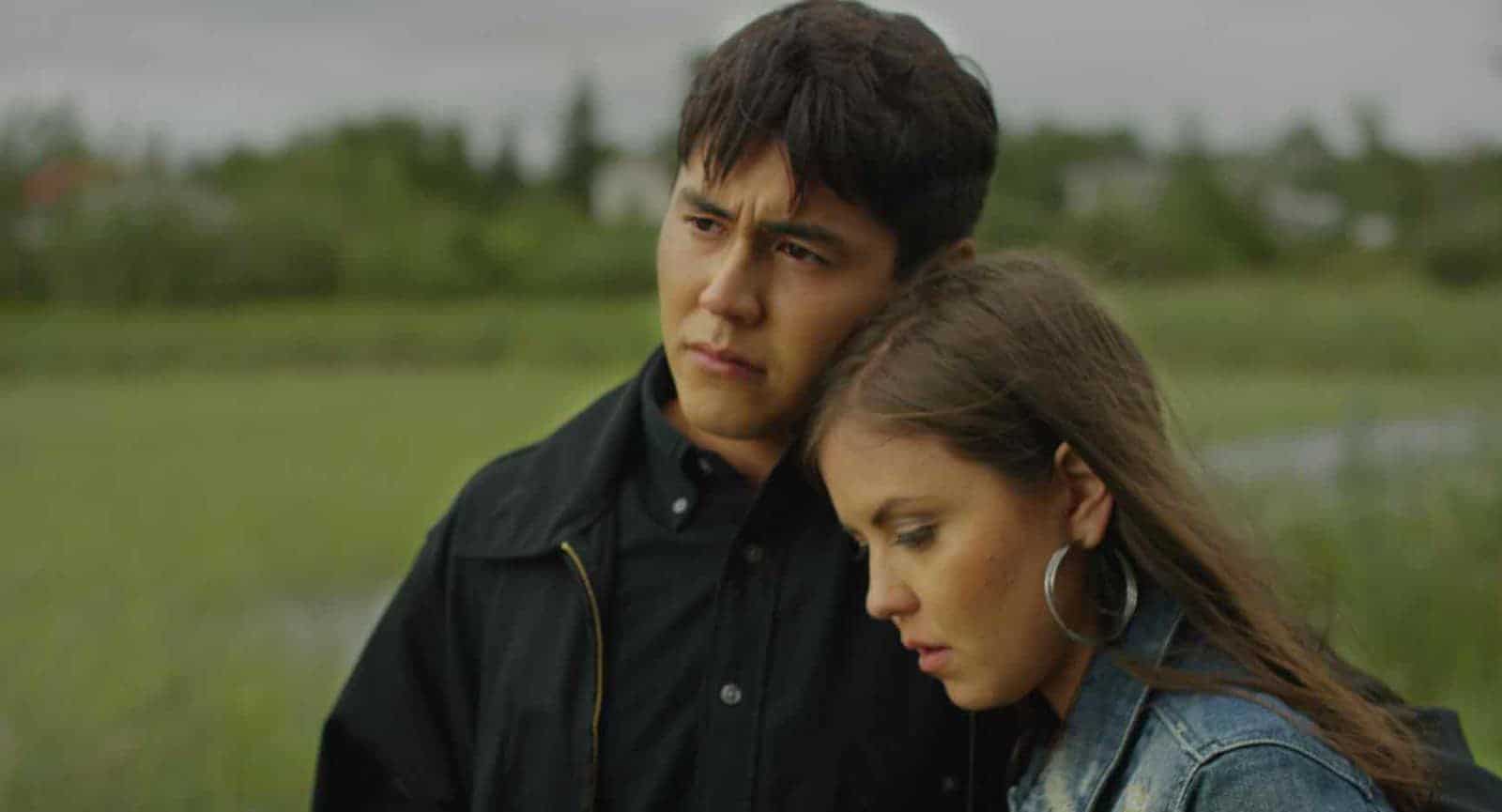Writer-director Matthew Ross discusses his first feature, Frank & Lola, a low-budget film with big name stars. At heart, it’s a love story but skips the meet-cute.

Writer-director Matthew Ross’ first feature, Frank & Lola, is a low-budget film with big name stars. Michael Shannon and Imogen Poots lead an impressive extended cast, for what is, at heart, a love story. But it skips the meet-cute to delve into the often confusing and tumultuous process of being in love, of struggling to make things work, and trying to resist failure.
A consistently intense film with flares of violence and moments of introspective wandering, it has an air that almost recalls the mood of that great, depressing romance, Le Mepris (Jean-Luc Godard, 1967). Through a combination of design, cinematography, absorbing dialogue, and a blend of composed and compiled score music, Ross demonstrates a wonderful way of expressing atmospherics with the film form.
Frank and Lola is currently screening at festivals and has been picked up for worldwide distribution by Universal. During the San Francisco International Film Festival, we sat down with Ross to talk about his remarkable debut.

Seventh Row (7R): What was your earlier short film, Lola (2006), about? Is it related to Frank & Lola in any way?
Matthew Ross (MR): It’s not an excerpt from the film, and it’s not the same characters. I made it as a calling card to show we could make this movie. But we made it at a very low budget, so it doesn’t have the production values of the feature by a long stretch.
7R: Frank & Lola is a fascinating character study, but the characters remain elusive even by the end of the film. Why was that something that you were interested in presenting?
MR: I really wanted to tell a story of two flawed people who are trying their best, despite the mistakes they might make. Frank is a lot older than [Lola], and maybe he has more of a handle on his identity. But what happens with her definitely takes him to a place he’s never been before. Our identities are fluid, they evolve and change over time. Our grasp on them can waver between firm and loose.
7R: Michael Shannon’s character is very vulnerable in this film.
MR: I really wanted to show that aspect of him. In many of the parts Michael has been cast in, he hasn’t had the opportunity to be either a romantic lead, or be vulnerable. He’s always been someone who’s very obviously an outsider. I wanted to cast him in this part, which I think is probably different than what he’s done before.
I would say he could be the best living American theatre actor right now. He’s starring in Long Day’s Journey Into Night on Broadway right now, and he’s phenomenal. There’s tonnes of vulnerability in his theatre performances. When I saw that, I really wanted to put that on screen.
7R: You worked with Director of Photography Eric Koretz (Stolen Seas, Comet) and the film is simply beautiful. Had he done other things that made you interested in his coming on board?
MR: I had seen Dragonslayer, a great experimental documentary he had shot about skateboarders, which had won a prize at SXSW. I’d seen his commercial reel, and we have some friends in common. One of my producers, John Baker, had made Dragonslayer with Eric, and another of my friends had worked with him before. I interviewed at least a dozen DPs, and they were all really good, but within five minutes of talking to Eric, I knew that he was the one — sort of a visceral gut feeling, and one of the best decisions I had ever made.
7R: The soft-focus lighting — particularly at the beginning — is very colourful, almost carnivalesque. Was that a response to the city, or the genre, or something else?
MR: If you’re shooting a film in Las Vegas, and you want to make something original — which we certainly did — there are some things you need to avoid, some cliches. At the same time, we needed to establish that we were shooting in Las Vegas, and we didn’t have enough money to do second unit aerial shots or anything like that. That opening shot of the stratosphere on the Las Vegas strip, that’s kind of iconic, which was our way of placing the audience within that world. We had very different visual maps and logic for Las Vegas and Paris. We achieved completely different speeds for both of those places.
7R: I love that this is a film about Las Vegas, and filmed in Las Vegas, that doesn’t really lean on or give space to the typical, cliched aspects of the city. It’s a very engaging portrait of people who simply live there — what was the reasoning behind you setting your characters down there?
MR: Originally, it was a practical decision. I’d met some people from Las Vegas who wanted to finance the movie, but wanted to finance it in Las Vegas. (Originally, it was going to be in New York, which is my home town, and which I know very well. When I’m writing something or imagining it, it has to be specific.) So, before I did that, I visited Las Vegas.
Frank was an easy character to translate to Vegas: there are probably more chefs there than anywhere else in the world, because of the hospitality industry. More interesting was Lola, because in the New York version of the script, Lola gets a job at a magazine. She’s more literary so there are opportunities for her there. In Vegas, those don’t really exist.
What I wanted to find out, and what I found out when I went on a couple of extended scouting missions, is what a young attractive woman in Vegas does who’s not working in a service industry of some sort. So I met some Vegas people and discovered that the downtown Vegas scene has a real life and culture to it. I wanted to tap into that. That’s how we came up with Lola being an aspiring fashion designer in Vegas.
In many ways, Vegas is kind of the end of the road. It’s a gambler’s place, a place of feast or famine, and has a real emotional story to it. I wanted to capture that.
7R: So it has that thematic resonance as well. Did anything explicitly influence your design of the nightclub in Paris that Frank goes to?
MR: We filmed in a real sex club in Paris, so that was ready for us. We shot on one of the days that it was open and we had to get out of there by 10 p.m. so the actual sex club patrons could come in and do their thing. That’s all real.
7R: The beautiful score by composers Danny Bensi and Saunder Jurriaans, almost lulls you in as though the film is going to be an intense love story. It is, but then the score is ultimately quite unsettling too. How did you formulate the mood of the music?
MR: I’ve known Danny and Saunder for a long time (they started out as a New York indie rock band), and along with my work with Eric I would say that — not including actors, just on a creative level — working with Danny and Saunder was probably the most enjoyable and fruitful creative collaboration I had on the film. I wanted to take some big swings in this movie, from the writing to the way we shot it to the way we scored it. Danny and Saunder were completely on board with that idea.
I wanted a combination of Bernard Herrmann and Georges Delerue, both composers who were very bold. I was interested in was creating a single melody that could change, in instrumentation or tempo, that would evoke very different feelings depending on how it was orchestrated and formed — similar to Clint Mansell and the Kronos Quartet in Requiem for a Dream, with those two themes they keep repeating. Depending on what situation you’re in, the effect they have is extremely different.
I think Danny and Saunder were really interested by that, too: to create a similar melody, which you’ll notice throughout the course of the movie, that’s played in very different ways. I wanted something that really conveyed a very strong emotion, whether it was love or fear or dread.
7R: There are a lot of mirror reflections in Frank & Lola, and mirrors have an interesting history in cinema. Why did you make that such a theme here — was it more for character or aesthetic purposes?
MR: Both, really, and I’m happy you noticed that. That was definitely a huge aspect to the visual design of the movie. Ultimately, it’s a film about “what’s the truth” and “who is this person” and “what is their identity” and “how does my identity exist in relation to theirs” and “what’s the demarcation between me and us” and “what’s the demarcation between my past and my present and my future”. I thought mirrors and reflections could be a kind of interesting and powerful visual tool in expressing that theme.
7R: How did you decide to feature time jumps, brief ellipses, and offscreen, displaced dialogue.
MR: It has to be on a case by case basis, but there are certain nonlinear montage sequences. There’s a lot of pre-lapping where you hear something before you see it being said. I wanted to really play with film form, sound and image, and see what the power of that was. If you get ahead of the audience, or if you can do some interesting things like hear a conversation before you cut into it visually, I just think it draws the audience in and keeps them guessing. It prevents them from getting ahead of the story. And I think also on an experiential level, it creates a cinematic world that works by its own rules, that has its own logic to it. All the movies that I’ve loved over the years have had their own logic to them.
7R: I was very drawn in by the film having no distinct sense of time. I felt it could be months, or years, it’s almost dreamlike at times. What was your intention by not giving their relationship a time frame?
MR: The decision to not specify time jumps was ultimately made in the edit, although I had a pretty good idea that we wouldn’t specify anything in the final cut while we were in production. The shooting script had a few explicit time jumps written into it (e.g. “Two Weeks Later”, “Three Months Later”, etc.) so that the actors and department heads could internalize what I originally had in mind in terms of time frame.
Ultimately, I decided that the elliptical nature of the narrative and the love affair would be cleaner and more powerful without specifying things too explicitly. I’ve always been keen on activating the audience when it’s appropriate. Keeping the timeframe abstract and up to subjective interpretation felt like one of those moments. I also didn’t want to complicate the visuals with unnecessary text or add in corny time signifiers (like a Christmas Tree, etc.).

